Turon® Modular Shoulder System
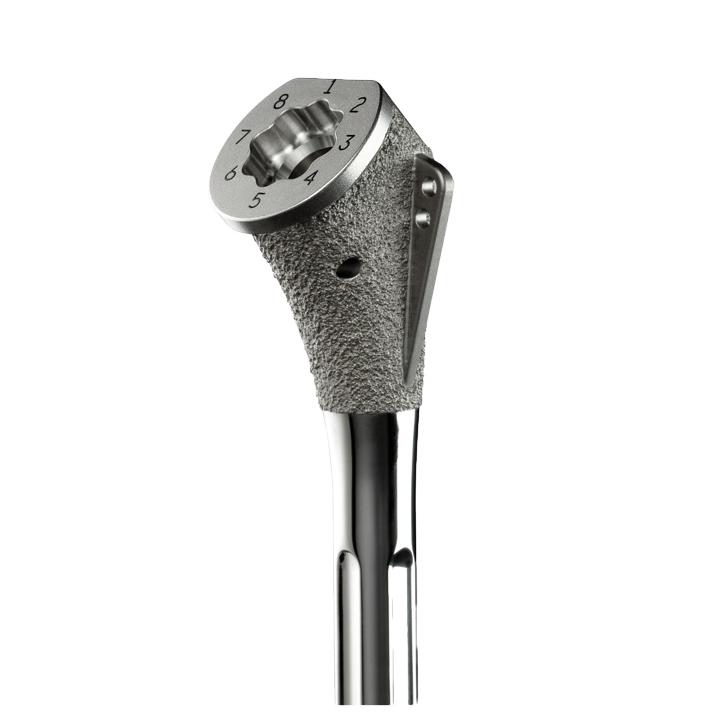

Turon™ Modular Shoulder System
Dial In.
The Turon™ is the first total shoulder system to incorporate the IMIN™ neck technology; a patented clocking feature which provides the ability to dial in the correct neck position to restore individual patient anatomy with increased precision compared to a fixed neck only design, thus providing optimum joint stability and range of motion, without compromising implant fixation.
Adaptability Allowing for Variability
Because, no two patients are alike. The modular humeral necks feature a double Morse taper design and a patented clocking feature to dial in the correct neck position and humeral head tilt to adjust to varying patient humeral neck anatomies. This, combined with neutral and eccentric humeral head sizing options, helps achieve the best implant fit with the optimal neck position and offset.
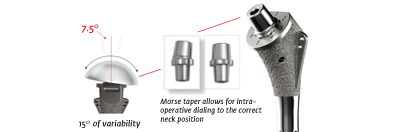
Flexibility with Ease
The Turon shoulder features a wide variety of intra-operative humeral stem, neck, head and glenoid options designed to suit different patient demands and to address most surgeries without the complexity of instrumentation.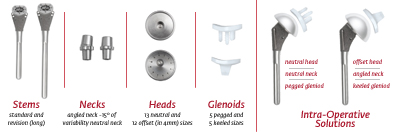
Reduced Proximal Lateral Design
The proximal lateral shoulder of the Turon humeral stem is reduced, which preserves bone, avoids tuberosity interference, and facilitates implantation.

Fixation
The Turon shoulder features a tapered proximal body, anterior and posterior fins, in addition to, a proximal plasma spray finish to provide a locking and rotationally stable metaphyseal fit.
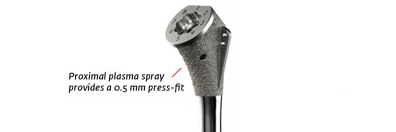
Reduced Stem Geometry
The Turon shoulder has a reduced stem length design that preserves bone and reduces the risk of distal fractures.
Dial in to Motion
The Turon modular total shoulder system is designed to help surgeons dial in to restore patient anatomy, optimize joint stability, and improve range of motion.
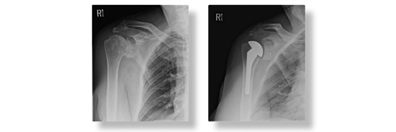
- Features & Benefits
- Clinical Results
- Links
Humeral Stems
Anatomic Adaptability
- IMIN™ neck technology – patented (Intrinsic Modular Indexable Neck)
Fixation
- Anatomic metaphysis, 135° head/neck angle, proximal plasma-sprayed, A/P fins with suture holes, medial hole, Titanium alloy (Ti6Al4V)
Bony Conservation
- Reduced lateral border - Reduced stem length (110 – 115mm)
Collared design – prevents subsidence Fluted, cylindrical distal segment Indications: Press-fit, Cemented, Fracture Standard: 6, 8, 10, 12, 14, 16mm Revision/Long : 6, 8, 10, 12, 14, 16mm

Humeral Necks
Anatomic Adaptability
- Neutral (Straight) Neck: 135° neck-shaft angle
- 7.5° Angled Neck: 127.5° - 142.5° neck-shaft angle
- IMIN™ neck technology
Fixation
- Dual Morse taper
Flexibility with Ease
- Threaded through hole allows distraction without disrupting well-fixed humeral stem
Dial in to Motion
- Adapt to variable patient anatomies
-
Adjust neck angle and humeral head tilt

Humeral Heads
Anatomic Adaptability
- Modular sizing: Neutral and Offset head options in varying head heights
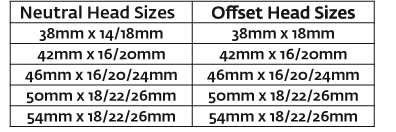
Flexibility with Ease
- Female Morse taper design facilitates assembly and dialing Offset
Dial in to Motion
- Offset heads address varying patient anatomies
- Adjust for soft tissue balance in total shoulder and hemiarthroplasty
- Compensate for deficient rotator cuffs Cobalt Chrome Alloy (CoCr)
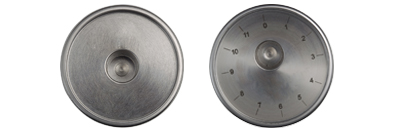
Pegged and Keeled Glenoids
Anatomic Adaptability
- Modular sizing: Keeled and Pegged in 5 sizes
- Pear-shaped geometry
Fixation
- Pegged glenoid – unique compression peg design aids initial fixation
- Roughened surface promotes cement interdigitation
Dial in to Motion
- Radial mismatch in A/P and I/S planes optimizes stability while allowing translational articulation
Compression molded polyethylene (UHMWPE) Radiographic markers

Clinical Challenge
No two patients are alike. A challenge in shoulder arthroplasty is restoring the patient's unique shoulder joint anatomy. This can be achieved through a combination of the implant sizing options, and the ability to adjust the neck position and humeral head tilt. Unfortunately, conventional fixed neck angle shoulder prosthetic designs do not offer this capability.
Clinical Solution
The modular humeral necks feature a double Morse taper design and a patented clocking feature to dial in the correct neck position and humeral head tilt to adjust to varying patient humeral neck anatomies. This, combined with neutral and eccentric humeral head sizing options, helps achieve the best implant fit with the optimal neck position and offset.
Indications
Joint replacement is indicated for patients suffering from disability due to:
- noninflammatory degenerative joint disease including osteoarthritis and avascular necrosis of the natural humeral head and/or glenoid;
- rheumatoid arthritis;
- correction of functional deformity;
- humeral fracture.
This device may also be indicated in the salvage of previously failed surgical attempts. The glenoid components are indicated for cemented use only.
These links will take you to non-DJO Surgical web sites to which this site's Legal Policy does not apply. You are solely responsible for your interactions with these sites.
Educational and Research Institutions
Orthopaedic Learning Center (OLC)
Biomotion Foundation
Resources
AAOS
Ortho Supersite
Orthopaedic List
Publications
JBJS
Florida Trend Magazine - Feature article: Body Builders (requires log-in)
Shoulder and Elbow Surgery
Orthopedics Today - RSP article (search rsp)
Shoulder Clinics
Emory SportsMedicine Center - Dr. Spero Karas
Steadman Hawkins Clinic
Coastal Orthopedics
Florida Orthopaedic Institute
AHN Bone and Spine, Indianapolis, Indiana
Ortho Virginia, Richmond, Virginia